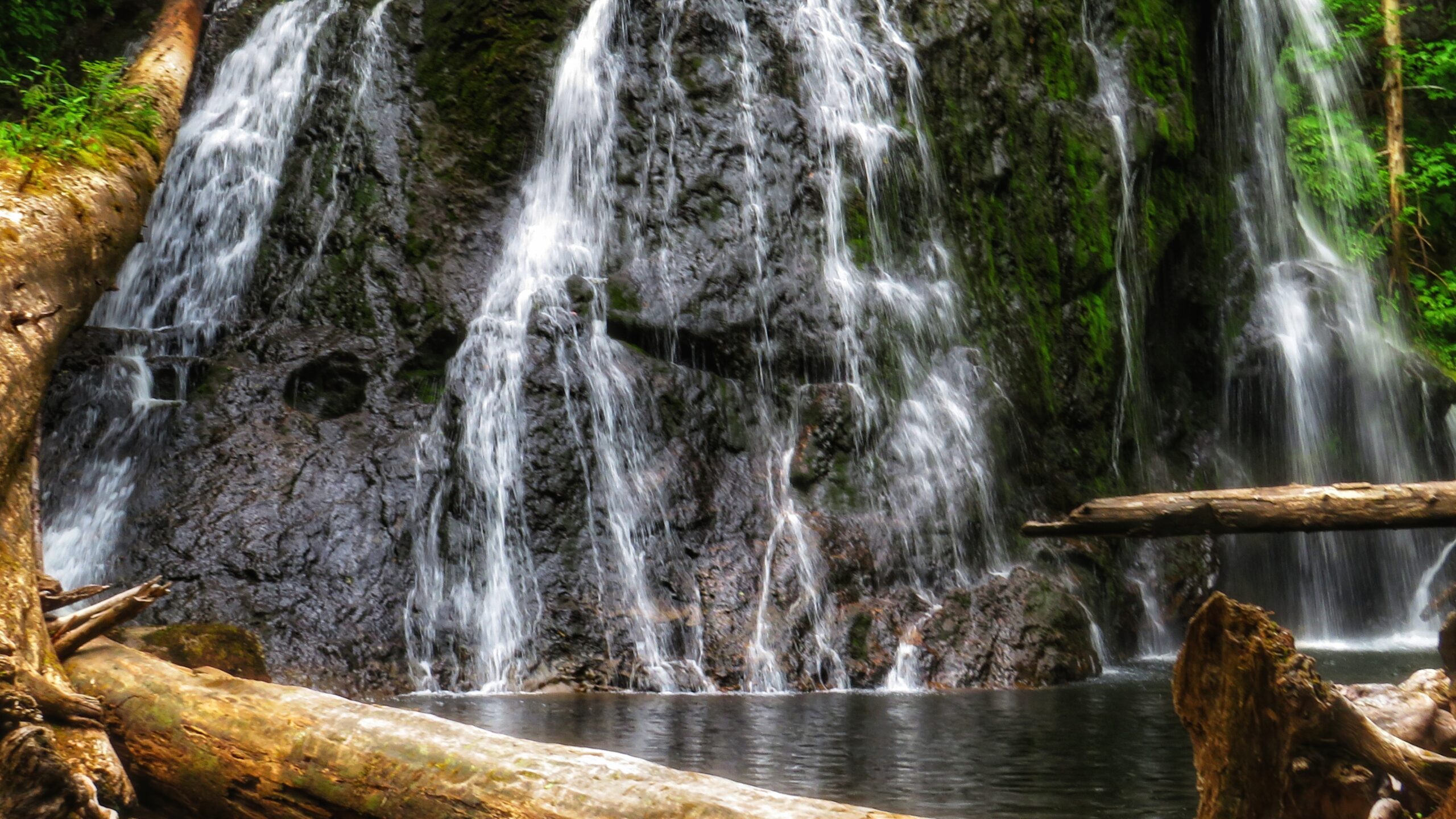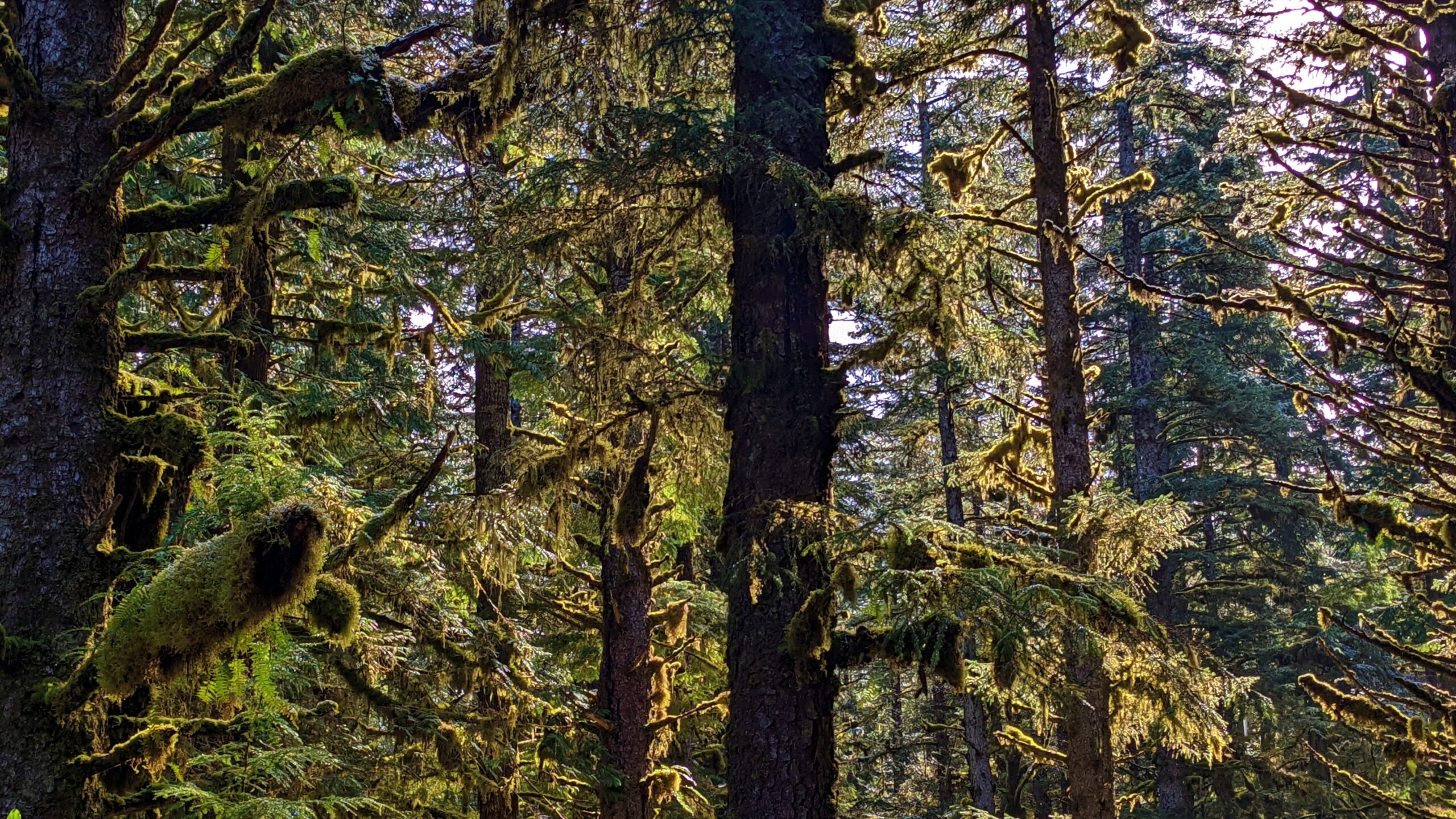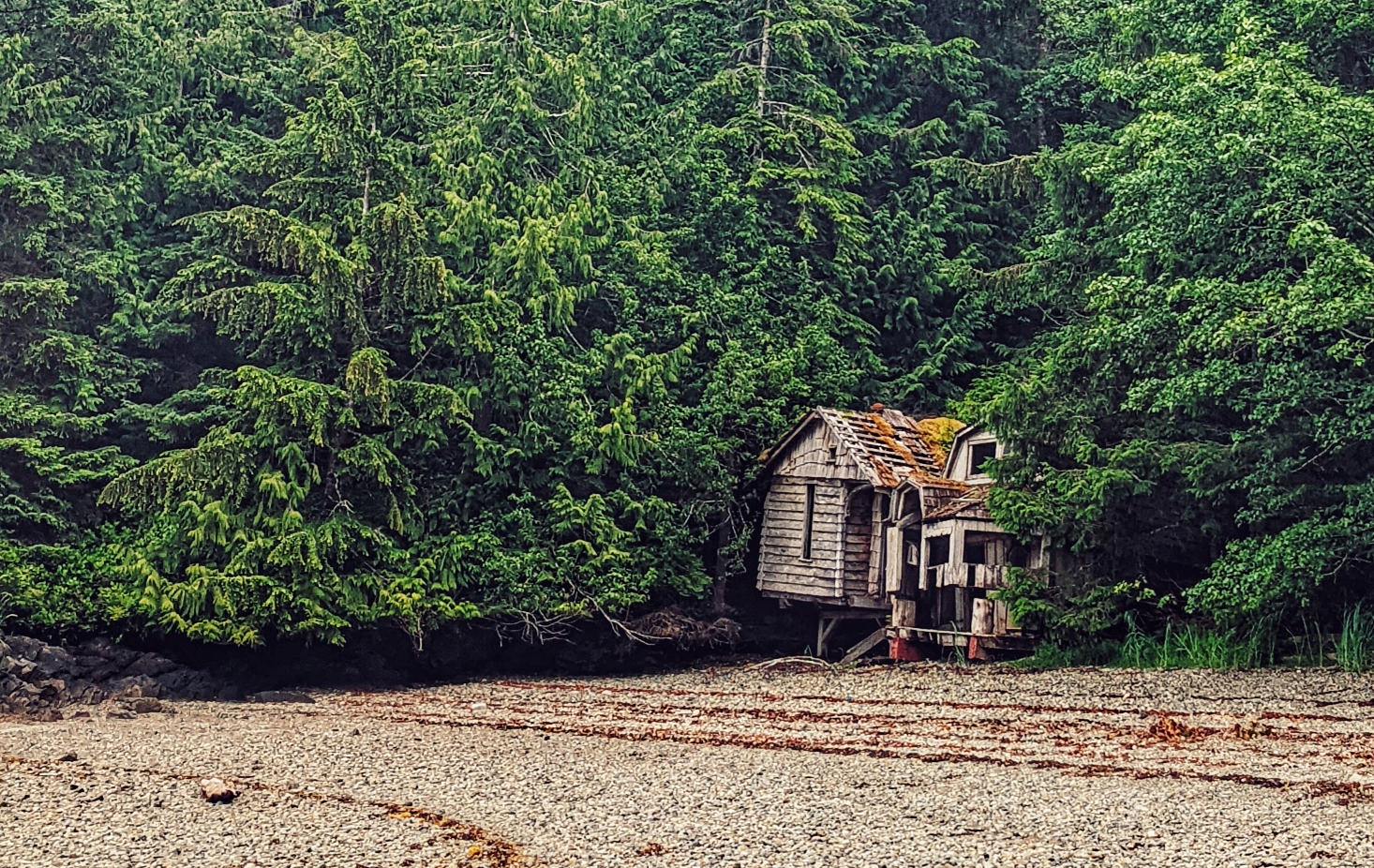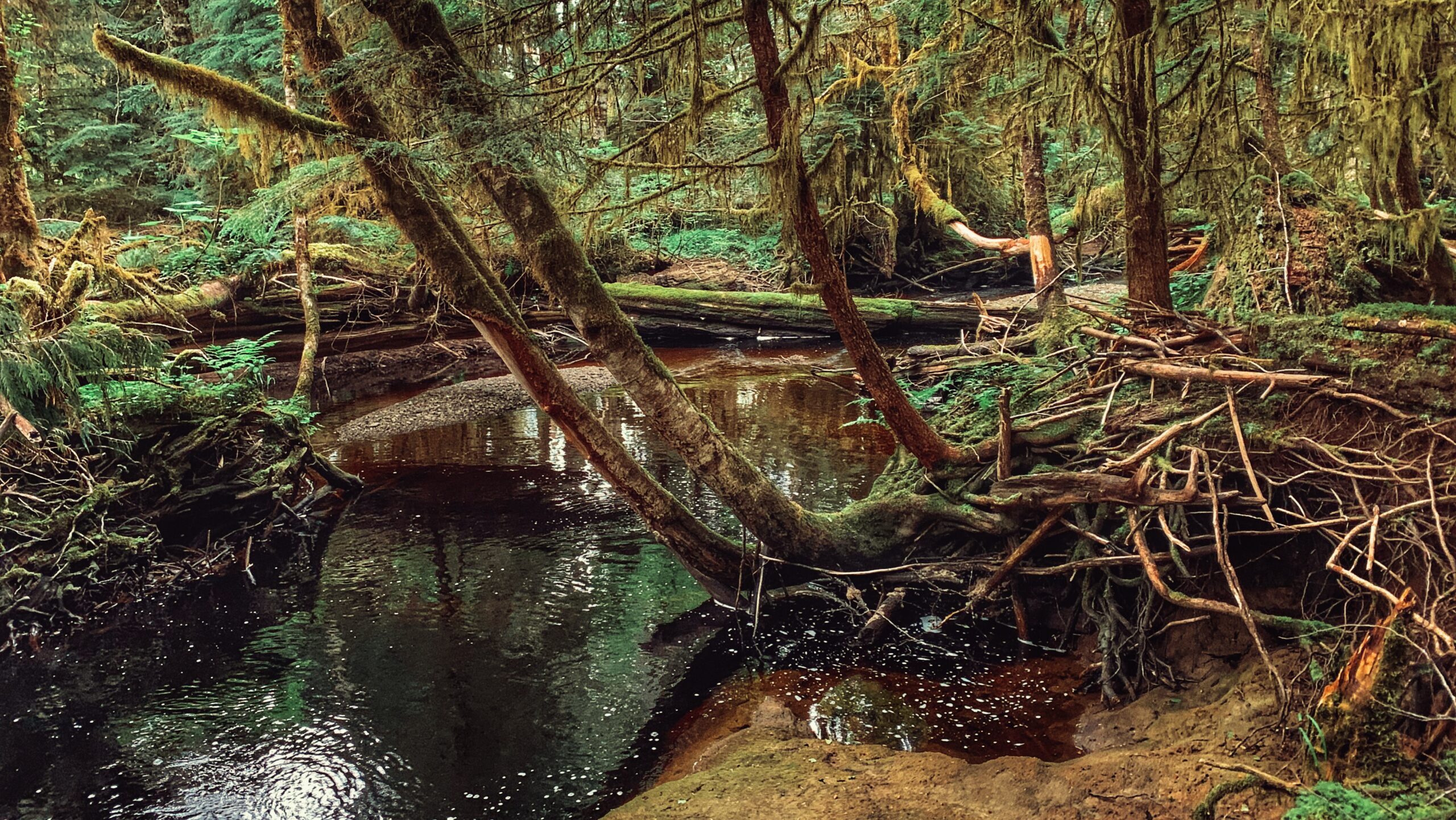The Blackwater Creek Waterfall Trails are a couple of hidden gems on Haida Gwaii. The two trails are short – clocking in at about 200 and 400 meters respectfully – and very remote; however, if one enjoys chasing waterfalls, these two routes are definitely worth the effort. As these trails are not well known, they do not appear in any of the literature available on Haida Gwaii.
Go Hike
The aptly named Masset Cemetery Road Beach Access Trail is exactly as it says: It is located adjacent to Masset Cemetery and provides straightforward access to South Beach. In this regard, it isn’t much of a hiking trail but serves a functional purpose. The trail is wide and flat, taking you through compacted sand and a few scattered spruce trees before hitting the beach.
The Louise Dover Trail is located adjacent to the Haans Creek bridge, just before entering Sandspit. Initially conceived in the mid-1990s, the trail is named after Louise Dover, an influential woman of Haida ancestry who lived in the community of Sandspit. In many respects, the trail is an apt memorial and tribute because it introduces hikers to key elements of Haida Gwaii: Important fish streams; unique flora and fauna; ancient Haida culture; rare geology and fossils; and, a larger appreciation for how everything depends upon everything else.
Smugglers Cove is tiny but its ease of access makes it far more attractive, in our view than the more popular Secret Cove. Smugglers Cove is literally right off the road whereas, with Secret Cove, you have to drive nearly an hour on rough logging roads and then hike a short trail.
The Three Mile Creek Trail is found deep within the Tlall Conservancy. Accessing it in the current day requires a bit of effort because the original point of entry – Survey Forest Service Road – was formally decommissioned in 2016 after years of disuse.
It might seem silly to write about the three Haida Gwaii Government Docks as trails – and believe me, I do feel kind of silly – but they are identified as “trails” in the Haida Gwaii Trails Strategy document (2011). I suspect this was probably done for funding purposes and to inflate the number of trails on the archipelago, though I’m not sure why one would need to do that.
Secret Cove Trail is relatively flat and an easy hike. After making your way through lush ferns, alders, and beautiful spruce trees, you’ll come upon the trail’s namesake cove. Once here, take a dip in the Pacific Ocean; however, we do advise you to keep your clothes on!







